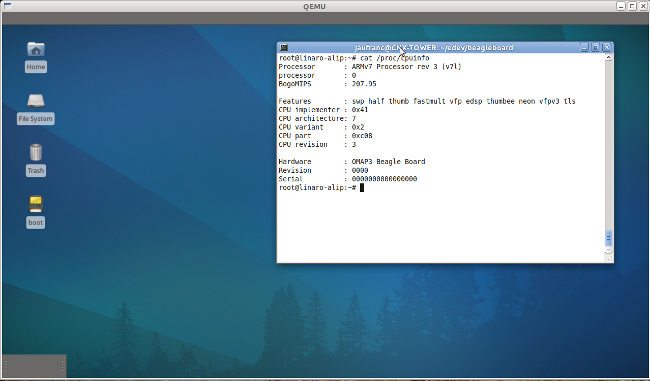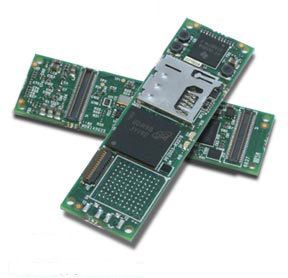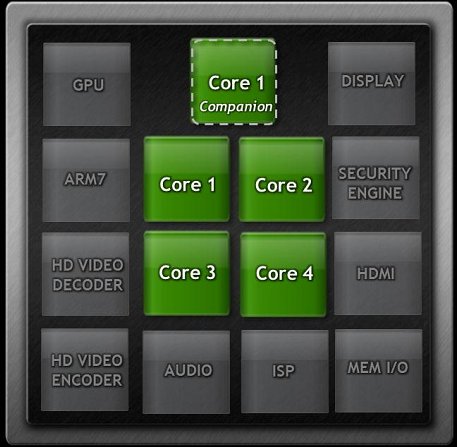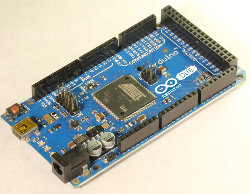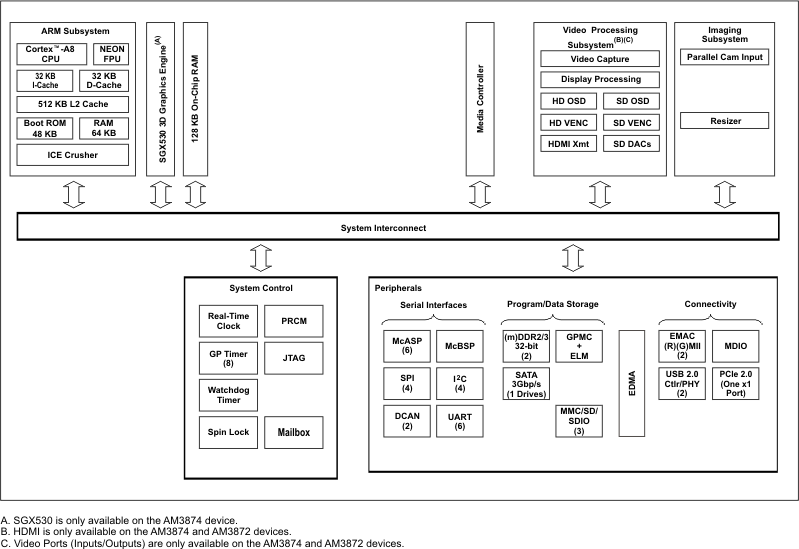If you just want to try a program on Beagleboard, but do not want (or have the means) to purchase a board, you may be able to use qemu to emulate the Beagleboard or BeableBoard-xM. I’ll details the instructions to run the Nano build (minimal kernel) and the ARM Linux Internet Platform (ALIP) distribution for Beagleboard on qemu. Please read the full post before starting the installation before there are currently some issues such as no Ethernet support. First, install or update linaro-media-create: sudo add-apt-repository ppa:linaro-maintainers/tools sudo apt-get update sudo apt-get install linaro-image-tools Then download the nano image and omap3 hardware pack: wget http://releases.linaro.org/platform/linaro-n/nano/11.08/nano-n-tar-20110823-1.tar.gz wget http://releases.linaro.org/platform/linaro-n/nano/11.08/hwpack_linaro-omap3_20110823-0_armel_supported.tar.gz Generate the image for qemu: sudo linaro-media-create –image_file beagle_sd.img –dev beagle –binary nano-n-tar-20110823-1.tar.gz –hwpack hwpack_linaro-omap3_20110823-0_armel_supported.tar.gz If you don’t have it already, get the latest qemu-linaro package from Linaro Maintainers PPA: sudo apt-get install qemu-system Check the version is correct: qemu-system-arm -version QEMU emulator version […]
99 USD OMAP3 Based Overo Computer On Module by Gumstix
Gumstix has manufactured its Overo COMS based on OMAP3503 and OMAP3530 since 2008. They have now announced a new low cost version named Overa Sand that sells for 115 USD per unit or less than 99 USD per unit for orders of 1,000 units or more. Overo Sand COM is Gumstix’s most basic computer-on-module with 256MB RAM and no on-board NAND. Here are the board specifications and features: Processor: Texas Instruments OMAP 3503 Applications Processor: – ARM Cortex-A8 CPU @ 600 Mhz Memory: 256MB RAM NO On-Board NAND Included Features: microSD card slot TPS65950 Power Management Expandability: via one 140-pin expansion board of Gumstix Overo series or custom, 140-pin expansion board via 27-pin camera board Connections: – (2) 70-pin connectors with 140 signals for: – I2C, PWM lines (6), A/D (6), 1-wire – UART, SPI, Extra MMC lines – Headset, Microphone – Backup battery – High Speed USB Host and […]
OMG! Quad Core Nvidia Tegra 3 Has Actually 5 Cores
We’ve been deceived ! All along we thought the new quad-core Nvidia Tegra 3 (codename Kal-El) would just have 4 cores…right… But Nvidia has just posted a blog entry talking about a mysterious fifth core. There is also the 12-core GPU, but we already knew about that. Here’s what Nvidia has to say about the fifth core: This extra core – which we call the “companion core” – runs at a lower frequency and operates at exceptionally low power. During less power-hungry tasks like web reading, music playback and video playback, Kal-El completely powers down its four performance-tuned cores and instead uses its fifth companion core. For higher performance tasks, Kal-El disables its companion core and turns on its four performance cores, one at a time, as the work load increases. The Variable SMP architecture is also completely OS transparent, which means that operating systems and applications don’t need to […]
Emulate Gumstix Overo COM with Qemu and Linaro Nano Image
Overa COMs are low cost computer-on-modules (COM) built around OMAP3503 and OMAP3530 depending on the model. Such device can be purchased on gumstix website. However if you just want to try a program on the board, you could use QEMU to emulate the Overo board as follows: Download pre-built image. (nano is a minimal linux ditribution without UI): wget http://releases.linaro.org/images/linaro-n/nano/11.07/overo-nano.img.gz gunzip overo-nano.img.gz Install the qemu tools: sudo add-apt-repository ppa:linaro-maintainers/tools sudo apt-get update sudo apt-get install qemu-user-static qemu-system Run the image: qemu-system-arm -M overo -clock unix -serial stdio -device usb-kbd -drive file=/tmp/overo-nano.img,if=sd,cache=writeback You can also watch the installation in the video below: Source: https://wiki.linaro.org/Resources/HowTo/Qemu-5 Jean-Luc Aufranc (CNXSoft)Jean-Luc started CNX Software in 2010 as a part-time endeavor, before quitting his job as a software engineering manager, and starting to write daily news, and reviews full time later in 2011. www.cnx-software.com
First ARM-Based Arduino Board with Atmel SAM3U
Arduino announced Arduino Due board with a 32bit Cortex-M3 ARM processor on their blog before Maker Faire. The SAM3U processor from ATMEL runs at 96MHz with 256Kb of Flash, 50Kb of SRAM, 5 SPI buses, 2 I2C interfaces, 5 UARTS, 16 Analog Inputs at 12Bit resolution and more. Contrary to previous hardware release, they intend to open the process to the community early on and they plan to to be demo the board and give away some boards to a selected group of developers who will be invited to shape the platform while it’s been created. After Maker Faire, a small batch of Developer Edition boards on the Arduino store will be sold to members of the community who want to join the development effort. The final board will be released by the end of 2011. If you can’t wait there are some other Arduino-like projects with Cortex-M3 support based […]
Texas Instruments AM387X Sitara ARM Cortex A8 Microprocessors
Texas Instruments (TI) has introduced three new AM387x ARM Cortex-A8 microprocessors (MPUs): AM3871, AM3872 and AM3874. TI says these MPUs offer integration of the ARM Cortex-A8 core, peripherals for high-bandwidth connectivity (SATA, D-CAN, PCI Express (PCIe), Gigabit Ethernet switch and more), 3D graphics for enhanced GUIs and display subsystems for camera connectivity and viewing. The AM387x ARM Cortex-A8 MPU can connect to and control IP and CAN networks, HD displays, keyboard, mouse, PC, SD card and various general purpose peripherals, all via one highly integrated processor in an industrial automation application controlling a production line and a high-speed, shared data bus allows for reduced communication overhead and quick access to shared data, which results in reduced chip count, discrete memory costs and printed circuit board (PCB) space compared to separate solutions. Those MPUs are targeted at a variety of fanless applications such as: single board computing, network and communications processing, […]
Window 8 ARM Platforms at Build Conference 2011
Yesterday, I mentioned the Nvidia Tegra 3 tablet running Windows 8 which is currently showcased at Build Conference 2011 and they also had a Tegra 3 laptop running Windows 8. But Nvidia was not the only company showing off ARM based processors running Windows 8. There were at least 2 other companies, namely Qualcomm and Texas Instruments. Qualcomm showcased a Snapdragon MSM8660 (Dual core 1.2 GHz) Tablet running Windows 8 and announced that the first batch of Windows 8 PC will be based on the Snapdragon processor. Texas Instruments brought a Windows 8 Tablet based on OMAP4430 (dual core 1 GHz) developed in partnership with Quanta. Jean-Luc Aufranc (CNXSoft)Jean-Luc started CNX Software in 2010 as a part-time endeavor, before quitting his job as a software engineering manager, and starting to write daily news, and reviews full time later in 2011. www.cnx-software.com
Intel and Google to work on Android for Atom
Intel officially announced it will collaborate with Google to optimize the Android OS for Intel’s Atom processor platform in order to help Intel entering the smartphone market. In his keynote on the 13th of September – the first day of the Intel Developer Forum 2011 – Intel CEO Paul Otellini announced the partnership with Google to support Android on Atom processors and said the first Intel-based smartphones will be available in the first half of 2012. Paul Otellini demoed Intel’s Android smartphone reference platform running Android 2.3 (Gingerbread). The phone is 9.5mm thick, had an HDMI output, NFC support and features Intel’s 32nm Medfield processor which is said to include a newer generation GPU. Intel also showed off the new ISP (Image Signal Processor) capabilities in Medfield which is capable of capturing up to 20 fps at 1600 x 1200. However, the reference platform could only deliver 10 fps from […]


